



Table of Contents
- Introduction
- The Balance of Five Elements
- Vastu Recommendations for Wall Colors
- Vastu Recommended Wall Colors as per Directions
- How Different Colors Impact as per Vastu
- Vastu Prohibited Wall Colors
- Benefits of Vastu Approved Wall Colors
- Conclusion
- Faq's
Introduction
When it comes to selecting colors for your living spaces, it's more than just a matter of personal taste. The hues you choose have the power to influence your mood, mindset, and overall well-being. Your home isn't just a physical structure; it's a reflection of your inner self and the environment where you shape your life experiences. In the ancient Indian science of Vastu Shastra, the significance of colors is deeply understood, with specific guidelines provided to harmonize colors with cosmic energies and invite positivity and prosperity into your life.
Each color carries its own unique energy, capable of either uplifting or dampening your spirits. By understanding this, Vastu Shastra emphasizes the importance of selecting wall colors that align with natural elements and cardinal directions, harnessing cosmic forces to enhance various aspects of your life. Whether it's fostering tranquility, promoting physical health, or attracting financial abundance, the right choice of colors can profoundly impact your overall well-being.
Through mindful consideration of colors in your living spaces, you not only express your inner self but also create an environment conducive to growth, harmony, and success. By adhering to Vastu principles in choosing wall colors, you strive to create a sanctuary that resonates with positive vibrations, allowing you to lead a fulfilling life brimming with health, wealth, and happiness.
The Balance of Five Elements
While adhering to Vastu principles in choosing colors is crucial, it's equally important to ensure that these colors harmonize well with the five fundamental elements of nature - earth, fire, water, air, and space. These elements are believed to influence the energy flow within our living spaces, impacting various aspects of our lives.
Earth
The element of earth symbolizes stability and grounding, making it essential in areas where a sense of security and rootedness is desired, such as the living room and bedroom. To balance this element, opt for earthy colors like brown, green, off-white, and beige. Additionally, incorporating natural materials into your decor, such as wood and stone, can further enhance the earth element's presence and energy.
Fire
Representing light and dynamic energy, the fire element is best suited for spaces like the kitchen and living rooms, where activity and social interaction thrive. Colors like red and orange are associated with the fire element, but it's advisable to use them in combination with neutral tones to maintain a sense of balance and prevent overwhelming energy.
Water
The water element exudes a calming and fluid energy, making it ideal for areas of relaxation and rejuvenation, such as bathrooms and bedrooms. Shades of blue and sea green resonate with the water element, fostering a sense of tranquility and serenity within these spaces.
Air
As the element of air signifies freedom and openness, it's predominant in areas characterized by ventilation and circulation, such as the living room. Opt for colors that evoke a sense of lightness and freshness, such as pastels and lighter shades of green and yellow, to enhance the air element's presence and promote a harmonious atmosphere.
Space
The element of space is associated with expansiveness and clarity, making its presence felt in areas like the entrance foyer and meditation room. Colors like white, cream, and soft pastels complement the energy of the space element, creating an atmosphere of purity, tranquility, and receptivity.
By ensuring that the chosen colors align harmoniously with these five elements, you can create a balanced and energetically vibrant living environment that supports your overall well-being and enhances the flow of positive energy throughout your home.
Vastu Recommendations for Wall Colors
In the practice of Vastu Shastra, the selection of colors for your home isn't solely about personal preference; it's about aligning with cosmic energies to invite harmony, prosperity, and positivity into your living spaces. Each room in your home serves a distinct purpose, and accordingly, Vastu provides specific recommendations for the ideal colors to enhance the energy flow within those spaces.
|
Room |
Vastu Recommendations |
|
Master Bedroom |
Ideally located in the southwest direction. Colors like blue promote tranquility and emotional bonds. Light pink or red foster intimacy and harmony. Shades of green or brown evoke stability. |
|
Guest Room/Drawing Room |
Situated in the northwest direction. White tones create a welcoming atmosphere. Soft pastels like pale yellow or lavender add vibrancy. |
|
Kitchen |
Located in the northeast direction. Colors like orange and red enhance vitality. Yellow and pink signify warmth. Green denotes freshness. |
|
Bathroom |
Preferably in the northwest direction. White promotes cleanliness and purity. Natural elements add tranquility. |
|
Hall/Living Room |
Positioned in the northeast or northwest direction. Yellow or white promotes positivity. Soft furnishings enhance comfort. |
|
Pooja Room |
Facing the northeast direction. Colors like yellow or white facilitate spiritual practices. Light blue or green enhances serenity. |
|
Kid's Room |
Adorned with soothing colors like light green or yellow to aid creativity. Avoid bright shades like red or navy blue. |
|
Main Door/Entrance |
Soft colors like white, silver, or wood tones create a welcoming entryway. Dark colors should be avoided. |
|
Balcony/Veranda |
North or east direction benefits from calm colors like blue or cream. Dark colors should be avoided. |
|
Garage |
Northwest side benefits from light shades like white or yellow. Enhance organization within the space. |
|
Home Exterior Walls |
Light colors like cream, beige, or pale yellow create a timeless facade. Consider architectural style and surroundings. |
1. Master Bedroom
According to Vastu principles, the master bedroom, ideally located in the southwest direction, benefits from colors like blue to promote tranquility and deepen emotional bonds. Light pink or red hues are recommended for newly married couples, fostering intimacy and harmony. For those seeking a calming ambiance, shades of green or brown can evoke a sense of stability and groundedness.
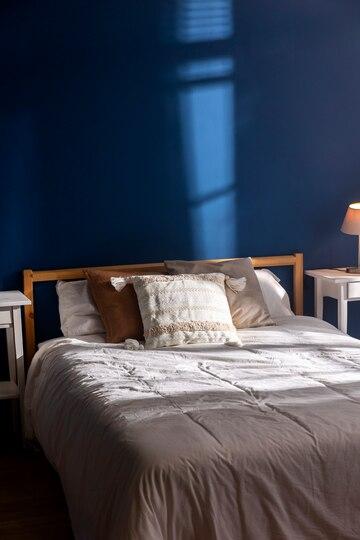
The master bedroom holds significant importance in Vastu as it symbolizes intimacy, rest, and emotional balance. Besides the suggested colors, it's essential to consider the occupants' personal preferences and their energies. For instance, if the occupants are seeking to enhance their communication and emotional connection, shades of light blue can promote harmony and understanding. Additionally, incorporating elements of nature such as wooden furniture or earthy decor items can further amplify the grounding energy of the space.
2. Guest Room/Drawing Room
The guest room or drawing room, situated in the northwest direction, is best adorned with white tones to create a welcoming and harmonious atmosphere. White, associated with purity and clarity, is also suitable for children's rooms, especially those leaving for study purposes, as it promotes a conducive environment for learning and growth.
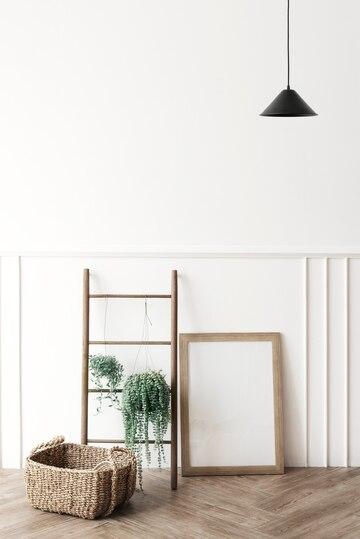
While white is a versatile color choice for the guest room or drawing room, it can be complemented with accents of other colors to add vibrancy and warmth. Soft pastel hues like pale yellow or lavender can create a welcoming ambiance, while artwork or decorative pieces featuring floral motifs can evoke a sense of freshness and positivity. It's also advisable to ensure adequate lighting in these spaces to uplift the mood and encourage social interactions.
3. Kitchen
The heart of the home, the kitchen, finds its ideal location in the northeast direction. Colors like orange and red, symbolizing vitality and energy, are recommended to enhance the fiery element of the kitchen. Warm tones such as yellow and pink signify love and warmth, while green denotes freshness and positivity, making them excellent choices for kitchen decor.
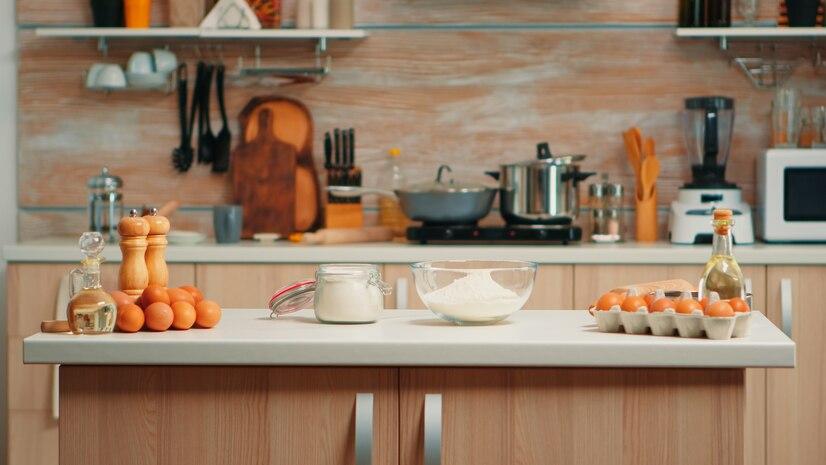
In addition to the recommended colors, incorporating elements of fire, such as copper or brass utensils, can enhance the kitchen's energy and vitality. Consider installing ample lighting fixtures to illuminate the space and foster a sense of clarity and efficiency. Furthermore, maintaining cleanliness and organization in the kitchen is essential according to Vastu principles, as it promotes positive energy flow and enhances the overall well-being of the occupants.
4. Bathroom
For bathrooms located in the northwest direction, white is the preferred color according to Vastu principles. White reflects cleanliness and purity, creating a serene and hygienic environment conducive to relaxation and rejuvenation.
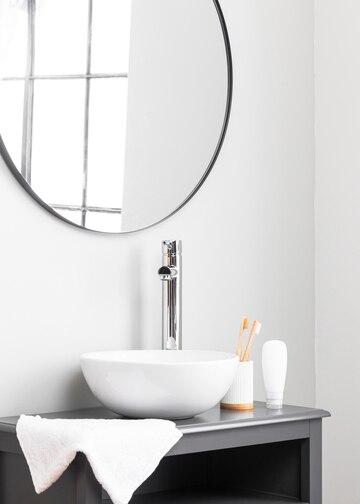
Apart from painting the walls white, integrating natural elements like plants or bamboo accessories can infuse the bathroom with a sense of tranquility and rejuvenation. Soft lighting fixtures and aromatic candles can create a spa-like atmosphere, encouraging relaxation and stress relief. Additionally, incorporating storage solutions to keep the space clutter-free enhances the flow of positive energy and promotes a sense of cleanliness and hygiene.
5. Hall
The hall or living room, situated in the northeast or northwest direction, benefits from colors like yellow or white to promote positivity and brightness. These light hues create an inviting and uplifting ambiance for social gatherings and family gatherings.
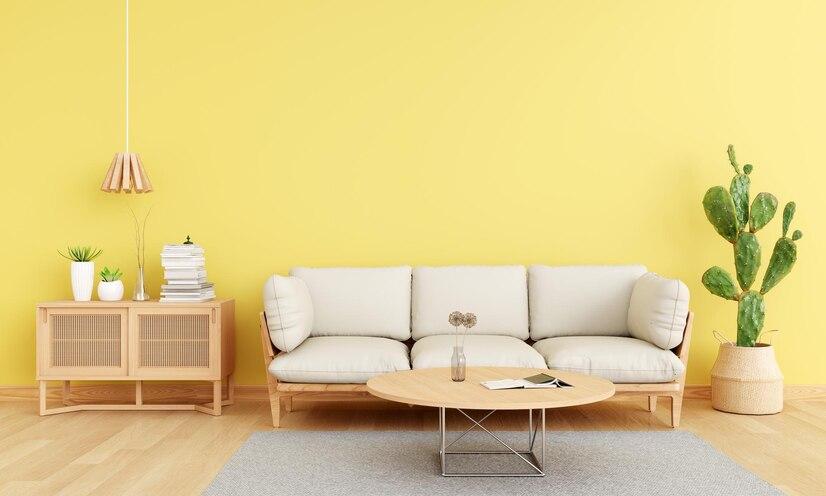
While yellow and white are excellent choices for the hall, consider incorporating elements of metal, such as decorative mirrors or metallic accents, to enhance the space's brightness and spaciousness. Soft furnishings like plush rugs or throw pillows can add texture and warmth to the room, making it inviting for gatherings and social events. It's also advisable to declutter the hall regularly to maintain a harmonious energy flow and create a welcoming atmosphere for guests.
6. Pooja Room
Facing the northeast direction to harness maximum sunlight, the pooja room is ideally adorned with colors like yellow to facilitate spiritual practices and invoke positive energy. White, symbolizing purity and serenity, is also favored for its calming effect, while light blue and green enhance the sacredness of the space.
Enhance the sacredness of the pooja room by incorporating spiritual symbols or idols that resonate with the occupants' beliefs and values. Consider installing soft lighting fixtures or candles to create a serene ambiance conducive to prayer and meditation. Additionally, incorporating natural materials like wood or stone can further amplify the room's grounding energy and promote a sense of peace and tranquility.
7. Kid's Room
Children's rooms should be adorned with soothing colors like light green or yellow to aid creativity and concentration. Avoiding bright shades like red or navy blue is advisable, as they can evoke negative emotions or health issues in children.
When decorating children's rooms, prioritize safety, comfort, and creativity. Opt for non-toxic paints and furnishings to create a healthy and nurturing environment for children to thrive. Consider incorporating educational elements like colorful wall decals or interactive learning tools to stimulate their imagination and promote cognitive development. Additionally, ensuring adequate storage solutions can teach children the value of organization and responsibility from a young age.
8. Main Door/Entrance
Soft colors like white, silver, or wood tones are recommended for the main entrance to create a welcoming and auspicious entryway. Dark colors such as black or red should be avoided, while ensuring that the entrance opens inward in a clockwise direction, according to Vastu principles.
Enhance the curb appeal of your home by painting the main door in a color that complements the exterior facade and reflects the occupants' energy and personality. Consider adding decorative elements like a brass doorknob or intricate carvings to create a striking focal point and welcome guests with warmth and elegance. Additionally, incorporating potted plants or decorative lighting fixtures can further enhance the entrance's aesthetic appeal and create a positive first impression.
9. Balcony/Veranda
Balconies located in the north or east direction benefit from calm colors like blue, cream, or light pink and green tones to create a peaceful and refreshing outdoor space. Dark colors should be avoided, allowing occupants to connect harmoniously with the surrounding environment.
Transform your balcony or veranda into a serene oasis by incorporating comfortable seating arrangements and lush greenery. You may enhance the ambiance by incorporating potted plants or hanging baskets filled with vibrant flowers, creating a welcoming and natural atmosphere. Installing outdoor lighting fixtures or lanterns can extend the usability of the space into the evening hours and create a cozy atmosphere for relaxation and entertainment.
10. Garage
For garages situated in the northwest side, light shades such as white, yellow, or blue are recommended according to Vastu principles. These colors promote positivity and organization within the space.
Create an organized and functional garage space by investing in storage solutions such as shelves, cabinets, and hooks to keep tools and equipment neatly organized. Consider painting the walls in light colors to create a bright and airy environment that enhances visibility and safety. Additionally, incorporating adequate lighting fixtures and ventilation systems can improve the overall functionality and comfort of the space.
11. Home Exterior Walls:
Exterior home colors should reflect the preferences and energies of the occupants. Light colors like yellowish-white, off-white, or light mauve are considered suitable for all zodiac signs, creating a welcoming and harmonious facade for the home.
Consider the architectural style of your home and the surrounding landscape when choosing colors for the exterior walls. Light colors like cream, beige, or pale yellow can create a timeless and elegant facade that blends harmoniously with the natural surroundings. Additionally, incorporating decorative elements such as window shutters or trim in contrasting colors can add visual interest and curb appeal to your home's exterior.
By adhering to these Vastu guidelines for colors in each room of your home, you can create an environment that fosters positivity, balance, and well-being, ultimately enhancing the quality of life for you and your family.
Vastu Recommended Wall Colors as per Directions
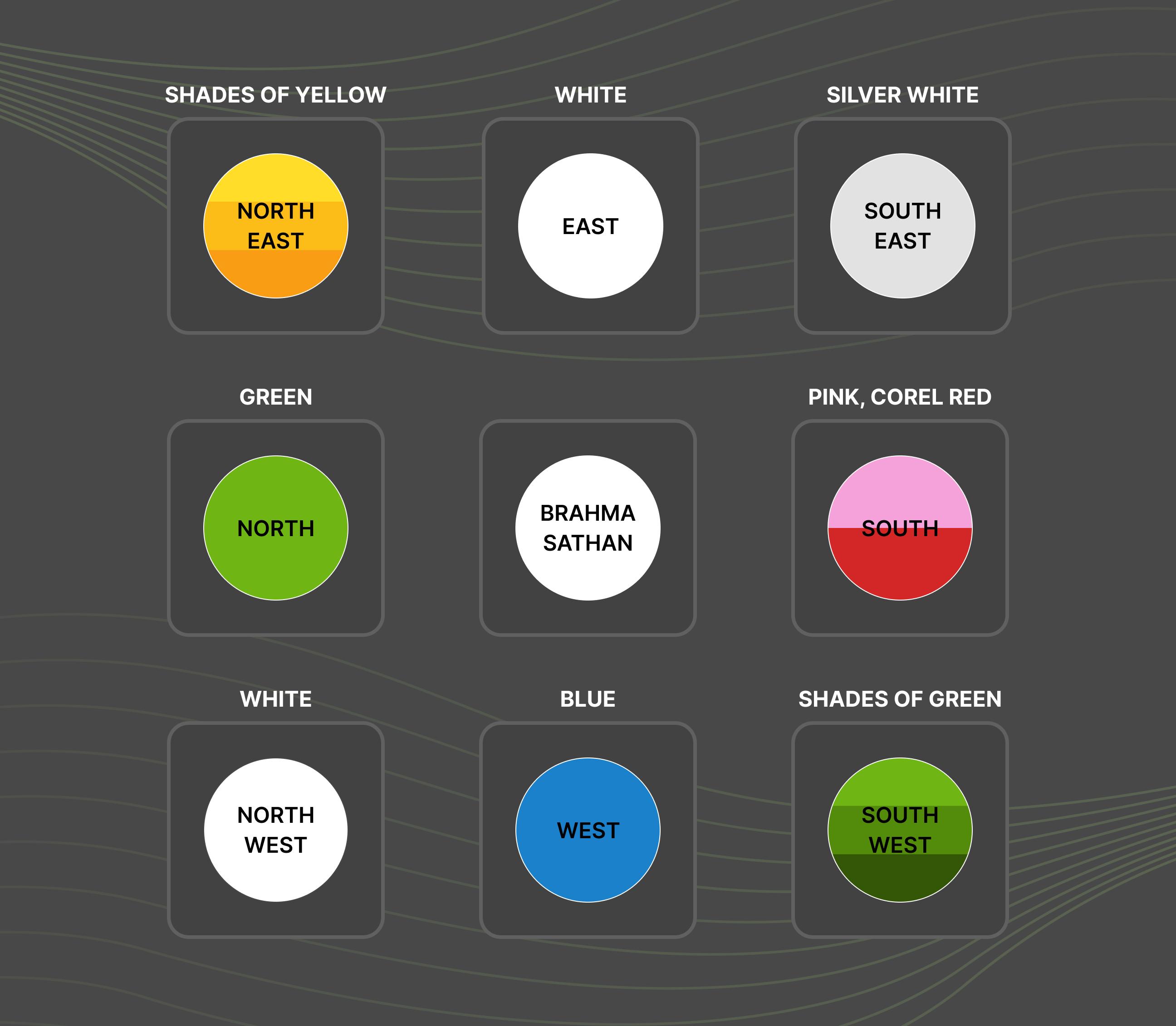
1. North-east Direction (Ruled by Jupiter):
Colors: Light blue, yellow
In Vastu Shastra, the north-east direction, governed by Jupiter, signifies wisdom, knowledge, and spirituality. To enhance these qualities and invite positive energy into the space, light blue and yellow hues are recommended for the walls. Light blue promotes tranquility and peace, while yellow symbolizes positivity and enlightenment.
2. East Direction (Ruled by Sun):
Colors: White, light blue
The east direction, under the influence of the Sun, represents vitality, growth, and new beginnings. To align with these energies and create a harmonious atmosphere, Vastu suggests painting the walls in white or light blue. White signifies purity and clarity, while light blue evokes a sense of serenity and expansiveness.
3. South-east Direction (Ruled by Venus):
Colors: Orange, pink, silver
Venus governs the south-east direction, symbolizing creativity, prosperity, and sensuality. To enhance these aspects and invite abundance into the space, vibrant colors such as orange, pink, and silver are recommended. Orange stimulates creativity and enthusiasm, pink promotes love and harmony, while silver adds a touch of elegance and luxury.
4. North Direction (Ruled by Mercury):
Colors: Green, pista green, light blue
Mercury rules the north direction, representing intellect, communication, and growth. To harness these energies and create a conducive environment for learning and development, Vastu suggests using green, pista green, or light blue colors for the walls. Green symbolizes harmony and balance, pista green signifies freshness and renewal, while light blue fosters clarity and mental peace.
5. North-west Direction (Ruled by Moon):
Colors: Light grey, white, cream
The north-west direction, influenced by the Moon, signifies receptivity, nurturing, and emotional well-being. To create a calm and nurturing atmosphere in this space, Vastu recommends using colors like light grey, white, or cream for the walls. Light grey promotes serenity and introspection, white symbolizes purity and clarity, while cream evokes warmth and comfort.
6. West Direction (Ruled by Saturn):
Colors: Blue, white, grey
Saturn governs the west direction, representing discipline, stability, and structure. To align with these energies and create a sense of order and balance, Vastu suggests using colors like blue, white, or grey for the walls. Blue promotes tranquility and introspection, white symbolizes purity and clarity, while grey adds a sense of stability and sophistication.
7. South-west Direction (Ruled by Rahu):
Colors: Peach, mud, light brown
Rahu influences the south-west direction, symbolizing grounding, security, and stability. To enhance these qualities and create a sense of groundedness in the space, Vastu recommends using colors like peach, mud, or light brown for the walls. Peach promotes warmth and nurturing, mud signifies stability and connection to the earth, while light brown evokes a sense of comfort and reliability.
8. South Direction (Ruled by Mars):
Colors: Red, coral red, pink, yellow
Mars governs the south direction, representing energy, passion, and strength. To harness these dynamic energies and create a vibrant atmosphere, Vastu suggests using bold colors like red, coral red, pink, or yellow for the walls. Red signifies vitality and courage, coral red promotes passion and creativity, pink fosters love and harmony, while yellow stimulates optimism and enthusiasm.
These Vastu-prescribed wall colors aim to harmonize the energies of each direction, fostering a balanced and auspicious environment conducive to health, wealth, and overall well-being.
How Different Colors Impact as per Vastu
|
Color |
Symbolism and Impact |
Best Usage |
|
Red |
Symbolizes bravery and power. Energizing but may be stressful |
Avoid in bedrooms; not suitable for everyone |
|
Orange |
Inspires spirituality, positivity, and happiness |
Encourages good social relationships; suitable for spiritual spaces |
|
Green |
Represents nature, hope, and freshness |
Ideal for study rooms, hospitals for quick healing, and creating a healthy environment |
|
Yellow |
Provides patience and wisdom |
Perfect for Pooja rooms; avoid in rooms with direct sunlight |
|
Blue |
Symbolizes relaxation and new growth |
Suitable for bedrooms or meditation rooms |
|
Purple |
Inspires faith, respect, and trust |
Use sparingly; light purple for a calming effect |
|
White |
Elegant and brightens rooms |
Recommended for ceilings, especially in north-west bedrooms |
|
Pink |
Represents joy, happiness, and purity |
Suitable for master bedrooms and rooms in the South and Southwest |
|
Black |
Indicates lack of hope and confidence |
Avoid using as it may cause frustration and hopelessness |
Vastu Prohibited Wall Colors
|
Color |
Reasons to Avoid |
Areas to Avoid |
|
Red |
Represents fiery planets like Rahu, Shani, Mars, and Sun |
Entire house; excessive use in bedrooms |
|
Brown |
Represents earthy energy |
Garage, car parking areas |
|
Grey |
Represents gloominess |
Study rooms, kitchen |
|
Black |
Can disrupt positive energy flow |
Entire house; temple or pooja room; kitchen flooring; dining area; bathroom cabinets |
|
White |
May bring egoistic tendencies |
Entire house |
|
Dark Blue |
Stimulates aggression |
Bedrooms, child's room |
|
Dark Blue |
Represents Varuna, god of water, conflicting with fire energy of kitchen |
Kitchen walls and overall kitchen color scheme |
|
Red |
Represents fire energy, may trigger temperament issues |
Bedrooms |
|
Dark Grey |
Represents gloominess and heaviness |
Kitchen |
Benefits of Vastu Approved Wall Colors

Emotional and Energetic Impact
Vastu-approved colors play a pivotal role in influencing the emotional and energetic dynamics within your home. Each color carries its own vibrational frequency, which can impact mood, emotions, and even behavior. By aligning the colors of your living space with Vastu principles, you can cultivate an atmosphere that fosters positivity, tranquility, and overall well-being. For example, soothing hues like blue and green can promote relaxation and calmness, while vibrant tones like yellow and orange can uplift spirits and promote a sense of joy.
Enhanced Energy Flow
According to Vastu principles, every section of your home possesses its own unique energy requirements based on its size, direction, and purpose. By selecting colors that resonate with the energy needs of each space, you can optimize the flow of positive energy throughout your home. For instance, painting the bedroom walls with calming shades of blue or green can promote restful sleep and rejuvenation, while using warm tones like red or orange in the kitchen can enhance vitality and creativity.
Aesthetic Appeal
In addition to their energetic properties, Vastu-approved colors also contribute to the aesthetic appeal of your living space. By carefully choosing colors that complement the architecture, décor, and furnishings of your home, you can create a visually pleasing environment that uplifts the mood and enhances overall ambiance. Whether you prefer subtle neutrals or bold hues, incorporating Vastu-approved colors can help strike a balance between beauty and functionality, creating a space that feels both inviting and harmonious.
Positive Lifestyle Impact
Ultimately, adhering to Vastu-approved colors can have a profound impact on your lifestyle and well-being. By surrounding yourself with colors that promote positivity, balance, and harmony, you can experience greater peace of mind, improved emotional resilience, and enhanced overall quality of life. Whether you're looking to create a sanctuary for relaxation, a space for creative expression, or a nurturing environment for your family, choosing Vastu-approved colors can help you achieve your desired lifestyle goals while fostering a deeper connection with your living space.
Conclusion
To conclude, the selection of Vastu-approved colors for your home holds profound significance beyond mere visual appeal. By aligning with the principles of Vastu Shastra, you not only create aesthetically pleasing living spaces but also invite positive energies and harmony into your home. Each color chosen thoughtfully in accordance with the direction and purpose of the room contributes to a balanced and nurturing environment, fostering well-being, prosperity, and spiritual growth.
Embracing Vastu-approved colors empowers you to create a sanctuary that resonates with positivity and vitality, enhancing every aspect of your daily life. From promoting restful sleep to fostering creativity and nurturing relationships, the colors you surround yourself with play a pivotal role in shaping your physical, emotional, and spiritual well-being. By infusing your home with the vibrancy of Vastu-approved colors, you embark on a transformative journey towards greater harmony, abundance, and fulfillment in every facet of your life.
explore further
Latest from Contemporary ideas
More from Innovations
Resources
Dwello, for every home buyer, is a way to go from 'I feel' to 'I know', at no extra cost.




